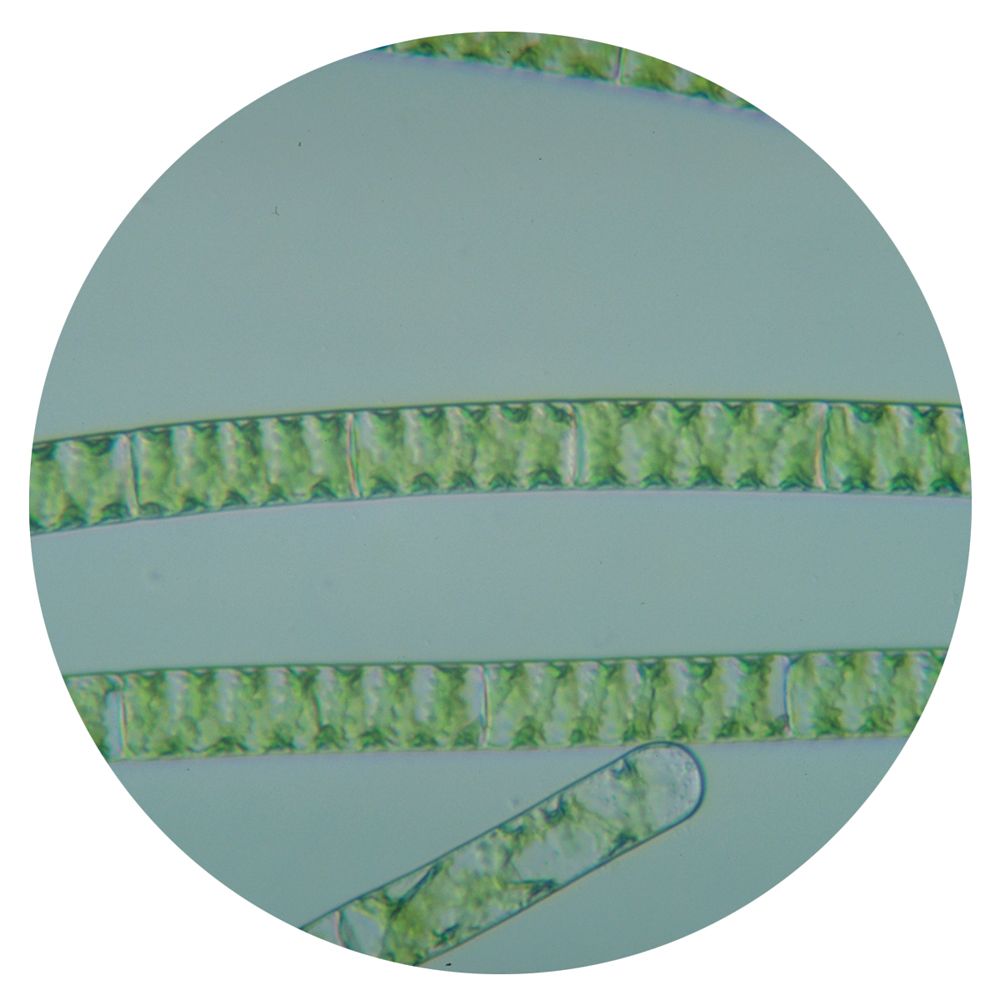My Cart
Your Shopping Cart is currently empty. Use Quick Order or Search to quickly add items to your order!

In this lab, students observe a variety of algae and record basic observations of them. Algae classification has long been murky, and in recent years it has been especially turbulent. Some of the major groups of algae are legitimately classed on the basis of their photosynthetic pigments, but other criteria are also important. Algae is best used to denote photosynthetic organisms that tend to live in water and that lack the specialized tissues and structures characteristic of terrestrial plants (i.e., embryophytes). Under this non-taxonomic use of the term, we include the blue-green cyanobacteria, even though they are not eukaryotes, and the green algae (i.e., Chlorophyta), even though they are now sometimes classed in the plant kingdom (depending on whether plants are defined by their development from an embryo or by their type of chloroplast).
Algae Set*
*This LabSheet can be used with your choice of individual algae cultures or the following sets:
High School Algae Set (151507)
Basic High School Algae Set (151505)
Advanced High School Algae Set (151510)
Due to the thickness of the specimens, concavity slides (632970) or Deep-Well Slides (603730E) are useful for viewing Volvox and some of the marine algae.
Ensure that students understand and adhere to safe laboratory practices when performing any activity in the classroom or lab. Demonstrate the protocol for correctly using the instruments and materials necessary to complete the activities, and emphasize the importance of proper usage. Use personal protective equipment such as safety glasses or goggles, gloves, and aprons when appropriate. Model proper laboratory safety practices for your students and require them to adhere to all laboratory safety rules. None of the algae included in these sets is parasitic or pathogenic. Even so, know and follow your district’s guidelines so that you are prepared if a student should ingest a culture. Cultures remaining after the completion of the activities can be flushed down a sink with tap water. The chlorine and chloramine in most tap water will kill the algae. If your tap water is not chlorinated, pipet 1 mL of household bleach (sodium hypochlorite solution) or isopropanol (rubbing alcohol) into the culture and wait 15 minutes before flushing down the sink.
Students can work individually or in pairs.
When you receive your cultures, remove them from the shipping container and inspect them. Place the culture tubes in a test tube rack or stand them upright in a beaker and set them under a light bank or in a window until you are ready to use them. Blue-green and red algae are exceptions and should be maintained in normal room light; bright light can harm them. For best results, use the cultures within 3 to 7 days of receipt. The Culturing Algae booklet that we send with algae orders includes information on long-term maintenance of algae cultures.
For each alga culture, set up a workstation with the following:
alga culture
microscope slides
coverslips
Each of our algae cultures contains enough material to prepare 30 wet mounts.
Optional: You may assign students to give currently accepted classifications down to the genus level for the algae observed. You might also have them compare one or more of the algae to plants and animals. Venn diagrams can be used to highlight likenesses and differences.
The following table is filled in for the algae in our 151507 High School Algae Set, which includes 10 cultures. Use the data entered here as a guide only. Students may record other data that are equally valid. Color is especially subjective and also is influenced by the quality of light used for illumination. Oscillatoria is listed as motile because the filaments slide along each other; however, if students do not observe this interesting motion, they will list Oscillatoria as nonmotile. Some diatoms also exhibit a gliding motion. On occasion, Synedra cells may form radial colonies.
| Name of Alga | Unicellular, Filamentous, or Colonial |
Motile (Y/N) |
Color | Specialized Features |
Algal Group |
|---|---|---|---|---|---|
| Anabaena | Filamentous | N | Blue-green | Heterocysts | Blue-green algae (Cyanobacteria) |
| Chlamydomonas | Unicellular | Y | Green | Flagella | Green algae |
| Chlorella | Unicellular | N | Green | None | Green algae |
| Closterium | Unicellular | N | Green | Vacuoles at each end of cells | Desmids |
| Euglena | Unicellular | Y | Green | Flagella, eyespot | Euglenoids |
| Oedogonium | Filamentous | N | Green | Oospores | Green algae |
| Oscillatoria | Filamentous | Y | Blue-green | Apical cells rounded | Blue-green algae (Cyanobacteria) |
| Spirogyra | Filamentous | N | Green | Spiral chloroplast | Green algae |
| Synedra | Unicellular | N | Yellow green or glassy | Silicified wall of 2 halves | Diatoms |
| Volvox | Colonial | Y | Green | Spherical colony of flagellated cells | Green algae |